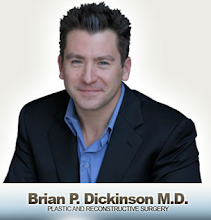

It is truly a great honor and privilege to have an opportunity to apply my aesthetic surgery training to breast reconstruction. Measurements I have found helpful for modifications of TRAM flap reconstructions are: 1) Base width, 2) Breast Height, 3) and transverse diameter of breast cup size as described by Pechter. In the photographs shown above, the patient is seven days post-operatively from her reconstruction. She will return for second stage breast reconstruction adjustments as well as reconstruction of her nipple areola complex. As a physician and surgeon I have made an agreement and commitment to myself to continuously learn and improve. While setting aside one hour a day to read in one’s field is extremely powerful, it is most advantages to perform those learning activities that increase one’s ability to “attend” or focus on a topic. The more proactive the learning activity the more effective the learning tool.
Reading Material:
1. Reoperative Plastic Surgery of the Breast, Kenneth C. Shestak
2. Surgery of the Breast: Principles and Art, by Scott Spear
3. Silverstein, MJ: Published Articles
I have found these textbooks to provide excellent background on aesthetic and reconstructive principles of the breast.
The Hoag Breast Cancer Weekly Conference:
I have been truly fortunate to interact with an outstanding group of clinical and academic surgical oncologists, oncoplastic surgeons, oncologists, radiologists, radiation oncologists, and geneticists.
One world renowned oncoplastic surgeon Dr. Melvin Silverstein is truly a leader in his field. Not only is he a truly committed surgeon, but he has over thirty publications in the surgical literature and continually educates through lectures at conference. I look forward to reading his publications. The cosmetic results of Dr. Silverstein's oncologic resections are truly outstanding.
My education continues through the examination of mammograms and MRIs with the radiologists, radiation treatments with the radiation oncologists, genetic trees with the geneticists, and finally I am becoming reacquainted with chemotherapy regimens and their mechanisms with the oncologists.
The trend in microsurgical breast reconstruction appears to have moved towards improving the donor defect of the abdominal wall. I have always been fascinated by the “delay phenomenon” for the TRAM flap that when the DIEA is ligated the SEA increases in diameter and the zones of perfusion of the abdomen improve. The physiology occurs secondary to the pressure gradients within the vessels that provide circulation to the lower abdominal wall.
I hope to one day research and translate findings to the clinical setting of a delay procedure for the SIEA flap. The SIEA flap obviates the need for the surgeon to open up the fascia of the anterior rectus sheath, potentially decreasing operative time and abdominal donor site morbidity for the patient.
In therory, if the deep inferior epigastric system were ligated distally via the perforators through the fascia, then could a “delay phenomenon” increase the diameter of the SIEA and SIEV reliably to obviate the need for the surgeon to enter the fascia. If these procedures are easily reproducible, then could free microvascular tissue transfer for breast reconstruction then be done on a completely outpatient basis?
Brian P. Dickinson, M.D.
